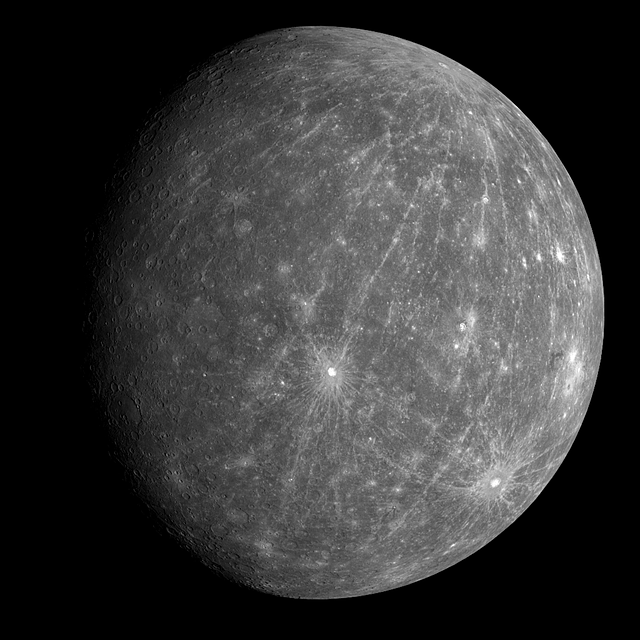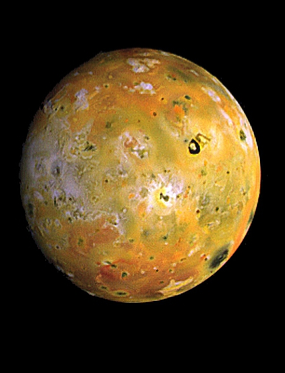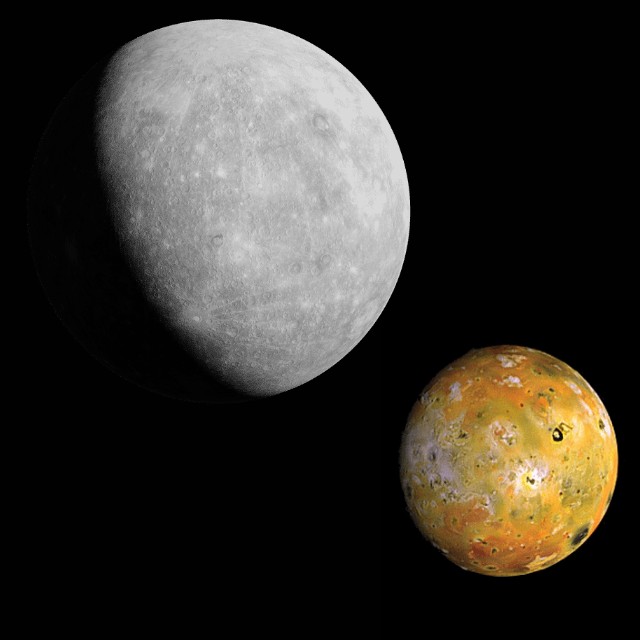*This post may contain affiliate links. This means we may make a commission if you purchase an item using one of our links*
The main differences between Mercury and Io is that Mercury is a planet that only orbits the Sun whilst Io is a natural satellite that orbits both Jupiter and the Sun, Mercury is bigger with a diameter of 4,879km whilst Io’s diameter is 3,643km, Mercury is the smallest official planet whilst Io is the 4th largest moon and Io is volcanically active whilst Mercury is not.
There are various other differences between the two so, continue reading for a more detailed look at each of these celestial entities along with their similarities and differences below.
What Is The Planet Mercury?
Table of Contents

Mercury is the planet closest to our Sun and would fall under the terrestrial planet moniker. Out of the 8 main line planets Mercury is also the smallest, coming in at 4,879km.
This planet is known for having its fair share of craters, which is mostly down to its thinner non protective atmosphere that is unable to stop interstellar debris from striking its surface.
Despite its close proximity to the Sun, Mercury is not the hottest planet in our solar system but, it does come in second, just behind Venus. It’s surface temperature is around 430 degrees on the upper end with the average temperature around 167 degrees Celsius whereas its core is far hotter at around 1,600 – 3,000 degrees Celsius.
Due to it close proximity to our local star, Mercury is unable to sustain a moon around its orbit and even has a very unique rotation around the Sun where it has 3:2 orbital resonance with the Sun.
As for how long it takes for the planet to rotate around our yellow dwarf star, its the shortest time period of 88 days for obvious reasons, whilst a single day on the planet takes 58.65 Earth days to complete. Its axial tilt is only 2 degrees to the right, making it amongst the straightest planets in the solar system too.
What Is The Moon Io?

The Moon Io – also known as Jupiter I – is the third largest of the Galilean moons, which has the closest orbit to Jupiter. It is the fourth-largest moon in our solar system by size – with a diameter of 3,643km – but has the highest density of all moons in the Milky Way.
In addition, Io has the strongest surface gravity of all moons and the least water by atomic ratio compared to any other astronomical object in our solar system.
Perhaps the most interesting feature of this lunar body is the 400 active volcanoes on its surface, which make it the most volcanically active object in the Milky Way; some of these volcanoes can exude plumes of sulfur to a height of several hundred miles.
The reason for this intense activity is the tidal heating caused by friction in the moon’s interior. Thanks to Io’s proximity to Jupiter, it finds itself caught between the gravity of its planet plus the two nearby moons – Ganymede and Europa. And this creates extreme tidal forces.
A side effect of these tidal forces is heat, which keeps most of Io’s crust in liquid form. Because of this, the surface of Io experiences a constant state of renewal; sites once home to large craters are slowly filled with molten lava and liquid rock.
While the complete makeup of Io’s surface is not yet defined, theories suggest that its main component could be sulfur and sulfur compounds because of the varied coloring. Silicate rock could also be a likely component as it would account for the high temperatures.
Io orbits Jupiter from a distance of around 422,000km, with an orbit that takes 42.5 hours to complete. Sitting 778,000,000km from the Sun, the surface temperature of this planet sits around -130 degrees Celsius. But due to the intense volcanic activity, the lava flows can reach temperatures of 1649 degrees Celsius, which is far hotter than anything on Earth.
How Are Mercury And Io Similar?
Io and Mercury do have their fair share of similarities, which in this case would include the following:
- Both have a hotter central core.
- Both are a spherical in shape.
- Both are terrestrial planets.
- Both have a very thin atmosphere and a rocky surface.
- Both have no other natural satellites orbiting them.
- Neither have tectonic plates.
Differences Between Mercury And Io
In regards to the differences between Mercury and Io, they
- Io is tidally locked to Jupiter whilst Mercury is in a 3:2 orbital resonance with the Sun.
- Io has a diameter of 3,643km whilst Mercury has a diameter of 4,879km.
- The orbital period of Mercury around the Sun is 88 days whilst Io’s orbit around Jupiter is 42 hours and 12 years to orbit Sun.
- Mercury orbits the Sun in a nearly circular pattern whilst Io orbits Jupiter elliptically.
- A day on Mercury is 55.85 days hours whilst a day on Io is between 42 – 43 hours.
- Mercury’s density is 5.43 g/cm³ whilst Io’s is 3.53 g/cm³.
- Io’s gravitational strength is 1.796 m/s² whilst Mercury’s is 3.7 m/s².
- In regards to mass, Mercury’s is 3.285 × 10^23 kg whilst Io’s is 8.93 × 10^22 kg.
- Mercury is the second hottest planet with an average temperature of 167 degrees Celsius whilst Io’s is around -130 degrees Celsius.
- Io is volcanically active whilst Mercury is not.
- Mercury is heavily cratered whils Io’s surface isn’t beaten up as due to molten lava filling in the cratered holes.
- Io’s atmosphere i svery thin consisting of sulfur dioxide as its primary compound whilst Mercury’s atrmosphere is also thin but consists of oxygen, sodium and hydrogen.
Summary
Although Mercury and Io may share a few features such as their terrestrial nature and the fact both are located in the same solar system, they have their fair share of differences too.
Whether it be in regards to their mass, size, their volcanic activity, orbital periods, distance from the Sun and beyond, they are ultimately functionally and operationally very different from one another.

